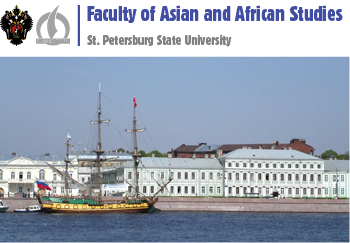Nowruz is the time to meet with friends
Nowruz literally means the "holiday of a new day". It has been celebrated at St Petersburg University. The event was held with the assistance of the St Petersburg University Club of Foreign Students.
More than a hundred St Petersburg University students from Russia, Iran, Turkmenistan, Tajikistan, Kyrgyzstan, Uzbekistan, as well as their friends gathered together to talk about the customs of their countries, share traditional dishes, and celebrate the onset of spring and warm weather in a special way.
The students prepared the traditional Haft-sin table for Nowruz, which has seven items beginning with the Persian letter “sin”. They symbolise the traditional New Year's table in Iran. “On our table, we have wheatgrass (sabze) which is a symbol of life, and vinegar (serke) which is a symbol of wisdom. Also, there are apples (sib), coins, garlic (sir), a tablecloth, and sumac spice,” said Aleksandra Golubkina, a fourth-year student and future orientalist. The table was decorated with a golden fish in an aquarium, which is also a traditional attribute of the New Year in Iran.
“In Turkmenistan, we have a tradition to treat people to national food before the holiday. This tradition has its own name – hudae”, explained Evgeniia Ernepesova and Milana Khankishieva, who are St Petersburg University psychology students, from Turkmenistan. “This is the eve of the celebration; this custom can be translated into Russian as ‘to let off steam’”.
Evgeniia and Milana treated the guests of the holiday to food of their national cuisine: samsa with meat; qutabs – thin pies stuffed with greens and pumpkin; and sweet peshme cookies.
Students from Uzbekistan treated the guests to a delicious dish of sumalak, which is a traditional dish of Iranian and Turkic peoples. They had prepared it from germinated wheat grains; and had cooked this dish themselves on the eve of the holiday.
Nowruz is celebrated on the day of the vernal equinox. For many eastern nations, this holiday is a symbol of spring, the beginning of a new life. Its roots go back to the pre-Zoroastrian beliefs of the peoples of the Middle East. In Iran, where the chronology is based on the solar Hijri, this holiday marks the beginning of the New Year. The International Day of Nowruz is included in the UNESCO List of Intangible Cultural Heritage of Humanity.
Students from Kyrgyzstan shared pastry, dried fruit, apples and oranges. Navat is a sugar in the form of large crystals; and it stood out in all its beauty like gemstones on the table. “My friends and I are participating in this festivity to talk about the culture of our country,” said Asel Osmonalieva, a medical student. “A lot of my compatriots always come to St Petersburg University for Nowruz, including those from other universities. This festivity is a time of meeting with friends and relatives.”
“We are always happy to talk about the customs of our countries and share our knowledge,” said Zhavokhir Muminov, chairman of the board of the St Petersburg University Club of Foreign Students. He congratulated all the guests on the coming of the Eastern New Year and invited them to join the club’s events more often.
The festive concert was opened with an unusual scene in Persian. It was staged by Iranian university students based on famous Soviet films. Aleksandra Adrianova and Sitora Dzhamutdinova performed lively dances. Veronika Kim sang a song about her hometown, Tashkent. Kyrgyz students Asel Osmonalieva, Dastan Torokulov and Asylkerim Polotov amazed everyone with their playing the komuz, an ancient string instrument. Sitora Dzhamutdinova and Azamat Sulimanov sang a duet. Laura Rashidova’s masterful performance of a Dagestan dance with a jug completed the festive concert.
“The tradition of celebrating Nowruz at the University has existed for a long time,” explains Ekaterina Pischurnikova, who is assistant professor in the University’s Department of Iranian Philology. “This is the time when our students, graduates and friends – everyone who is interested in this holiday – come to the University.”
https://orient.spbu.ru/index.php/en/all-news/all-news/all-news-archive/1037-nowruz-is-the-time-to-meet-with-friends#sigProIdee7c8bbfbb
- Category: News
- Hits: 1322





